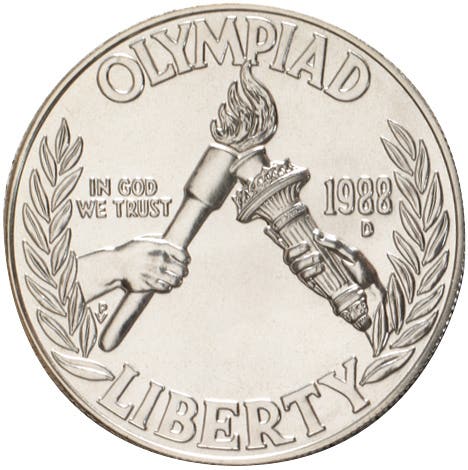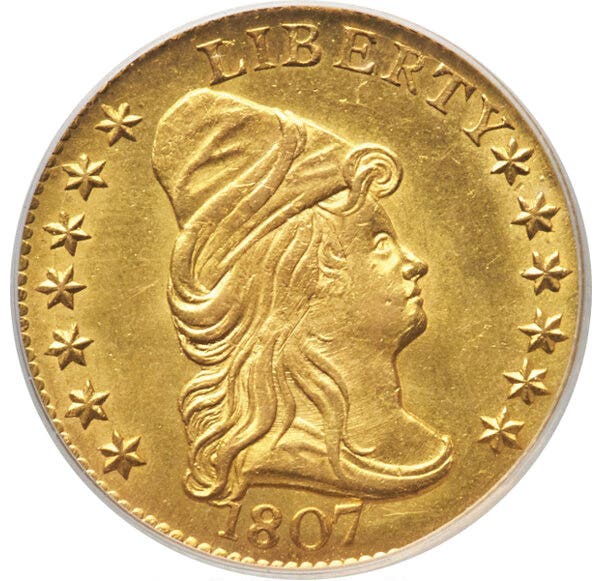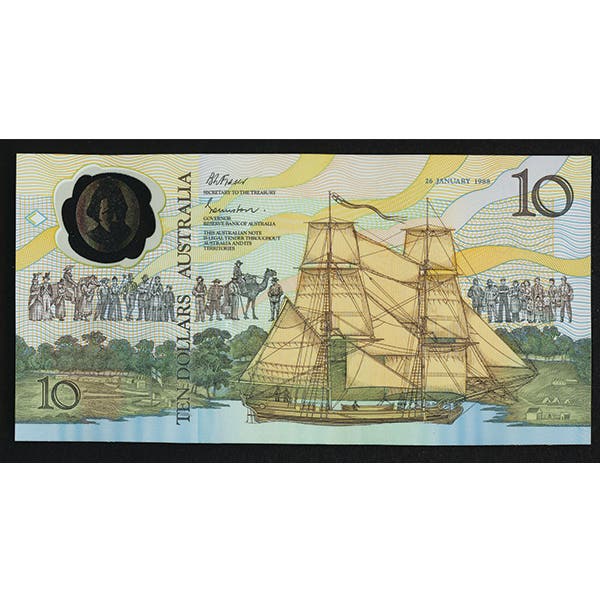Protect counterfeit detection info
After reading F. Michael Fazzari’s response to my Sept. 7, 2010, “Viewpoint” I felt compelled to respond.
This article was originally printed in the latest issue of Numismatic News.
>> Subscribe today!
After reading F. Michael Fazzari’s response to my Sept. 7, 2010, “Viewpoint” I felt compelled to respond.
Let me open by saying that I have much respect for Mr. Fazzari and his knowledge of numismatics, in particular professional grading. That being said, I must respectfully disagree with his assessment of my thoughts regarding counterfeit detection.
To summarize my “Viewpoint,” I stated that making information regarding counterfeit detection public helps counterfeiters improve their products, thus hurting the numismatic community. While there is a legitimate need for this information to be shared, I recommended this information be treated with security as a business treats confidential information. To that means I suggested the following:
First, that we designate caregivers of the information. I then stated that access be given to any established coin dealer or established ANA members. For the purpose of my proposal I defined “established” as five years or more. In addition, I further suggested that any established coin dealer or ANA member, once part of the group, upon their personal recommendation, be allowed to add a numismatist to the group. That would essentially offer access to those with a legitimate need to have the information while making it more difficult for the counterfeiters to know which of their products we can identify and how. It would also encourage those who are not ANA members to join the ANA as well as encourage those who do not have a “dealer relationship” to start one. Lastly, I discussed a proposed method of information sharing for the group.
Mr. Fazzari’s contention is that there is no harm in making information regarding counterfeit detection available to everyone. Why then, I must ask, does Mr. Fazzari go on to make a statement indicating just the opposite? He states, “One year in a counterfeit detection class at the ANA Summer Seminar, I revealed a single diagnostic ‘marker’ found on a recently discovered deceptive $10 Indian to a class of about 20 students. Within a month, the exact same die-struck counterfeits appeared at the authentication service with only that one particular defect removed from the counterfeit dies.” This information clearly assisted counterfeiters in improving their product, making it more difficult for collectors to identify, yet Mr. Fazzari feels no harm was done. To that I say, how so? Clearly harm was done. The information Mr. Fazzari provided in his seminar is no longer as valuable in assisting the collector to identify the counterfeit $10 Indian he discussed.
So, while there may still be other “markers” one can use to identify the counterfeit $10 Indian Mr. Fazzari spoke of, as collectors, our task of identifying this counterfeit is now more difficult.
Obviously, had the information been better protected, this may not have happened. I understand Mr. Fazzari’s contention that this information, in many cases, only helps counterfeiters eliminate entire types of defects from their work. However, it goes to show that counterfeiters do use this type of information to improve their products. The more information we make available to counterfeiters, the more deceptive their products become.
While I agree with Mr. Fazzari that a very good, and possibly best, defense against counterfeiters is to study the genuine article, we need to do more. To simply assume, as Mr. Fazzari asserts, “It is virtually impossible to keep information out of the hands of counterfeiters” is to simply give up. I must now ask, is Mr. Fazzari’s opinion based on a sincere belief that making information regarding counterfeit detection public is in no way harmful to the numismatic community or an assumption that nothing can be done to further prevent counterfeiting?
A “nothing can be done” philosophy accomplishes nothing. Using that logic, one would never lock their doors based on the assumption that if a thief wanted to get inside bad enough they could always find a way. Again, I feel something can be done. Many businesses keep company information private with few problems. Take for example the Coca Cola franchise. Over the years many batches of Coca Cola have been produced. However, the recipe used to make the drink still remains a secret to the general public. The information was shared with those making the drink as they had a legitimate need to know, yet the company was able to keep the recipe out of the hands of the general public. In other words, something can be done. So, while Mr. Fazzari may not endorse my suggestions, perhaps he could suggest other possible methods to assist in our war against counterfeiters.
Again, I agree that study of the genuine article is a wonderful defense against counterfeiters and possibly our best defense. However, providing information to the counterfeiters which enables them to produce a product more and more like the genuine article only hurts the numismatic community. Information regarding counterfeit detection needs to be available to the numismatic community, yet protected against counterfeiters.
Mr. Fazzari concludes by stating, “Any counterfeiter has access to genuine coins. The closer he is able to duplicate the ‘look’ of a genuine specimen, the more deceptive the fake will be. It becomes a simple matter to critique their own work, correct any defects, and strive to make better fakes without reading about ‘diagnostic markers’ in the numismatic press.”
While there is some truth to his statement, I feel the logic applied by Mr. Fazzari is somewhat flawed. Let me refer again to the example provided in my original “Viewpoint” article regarding Colonel Sanders and his fried chicken recipe. As stated, his recipe would have little value if available to everyone. So, while one can sample a genuine piece of Colonel Sanders’ fried chicken, try to duplicate it at home, critique their own work, correct any defects and strive to match the “real deal,” it is not quite that simple. However, if given the recipe or even some of the “secret” ingredients the task becomes much easier.
In conclusion, while counterfeiters can improve their craft to a certain degree by study and practice, why help them? With some effort, the numismatic community can develop a method to provide information regarding counterfeit detection to those with a genuine need to know while at the same time making it difficult for counterfeiters to obtain the same information. Mr. Fazzari may feel it’s best to leave the door to this information wide open. I feel the door should be locked and the keys distributed only to those with a genuine need to know. While there may be no perfect solution to our problem we cannot ignore the elephant in the room and should most certainly stop feeding him peanuts.
Had the numismatic community always treated information regarding counterfeit detection with a certain level of security, the problem we now face with regard to counterfeiting would likely be to a much lesser degree. While we cannot change the past, we can certainly learn from it. As George Santayana, American philosopher, poet and humanist, once said, “Those who do not learn from history are doomed to repeat it.” Have we, the numismatic community, learned anything?
This Viewpoint was written by Richard L. Francis Jr., a hobbyist from Cape Girardeau, Mo.
Viewpoint is a forum for the expression of opinion on a variety of numismatic subjects. The opinions expressed here are not necessarily those of Numismatic News.
To have your opinion considered for Viewpoint, write to David C. Harper, Editor, Numismatic News, 700 E. State St., Iola, WI 54990. Send e-mail to david.harper@fwmedia.com.
More Coin Collecting Resources:
• Subscribe to our Coin Price Guide, buy Coin Books & Coin Folders and join the NumisMaster VIP Program









